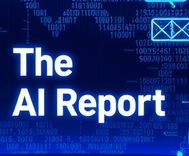The Ultimate Guide to AI Agents: Everything You Need to Know

The AI Report
Daily AI, ML, LLM and agents news
Introduction
Are you drowning in a sea of digital tasks? Juggling endless emails, analyzing overwhelming data sets, and trying to manage a to-do list that never seems to shrink can feel like a full-time job in itself. In a world saturated with information, the biggest challenge is often not finding data, but making sense of it and acting on it effectively. This is the exact problem that a new frontier of technology is designed to solve.
This guide is your comprehensive introduction to the world of AI agents. By the time you finish reading, you will have a crystal-clear understanding of what is an AI agent, how these sophisticated systems operate, and how they are already reshaping our world through practical, real-world examples. We'll strip away the jargon and provide a simple, clear framework for understanding this transformative technology.
At its core, an AI agent is an autonomous entity that uses sensors to perceive its environment and actuators to perform actions within that environment to achieve specific goals. Think of it as a smart program that can observe, decide, and act on its own, much like a digital employee working to complete a task you've assigned.
What is an AI Agent? (A Deeper Dive)
To truly grasp what is an AI agent, it's helpful to break it down into its fundamental components. While the technology can seem complex, the underlying concept is built on a simple, logical structure. Every intelligent agent, from a simple smart thermostat to a complex self-driving car, operates using three key elements:
Sensors: This is how an agent perceives its environment. A sensor is any tool that gathers information from the outside world. For a self-driving car, sensors include cameras, LiDAR, and radar to 'see' the road, other vehicles, and pedestrians. For a customer service chatbot, the 'sensor' is the chat window where it receives a user's typed questions.
Actuators: These are the components that allow an agent to act upon its environment. After making a decision, the agent needs a way to execute it. For the self-driving car, actuators are the steering wheel, accelerator, and brakes. For the chatbot, the actuator is its ability to type a response back into the chat window.
Decision-Making Engine (The 'Brain'): This is the core intelligence of the agent. It's the processor that takes the raw data from the sensors, interprets it, and decides which action the actuators should perform to best achieve its goals. A simple agent, like a smart thermostat, has a rule-based engine: if the sensor (thermometer) reads a temperature below the target, then the actuator (heater) turns on. More advanced intelligent agents use complex algorithms, machine learning models, and now, large language models, to make much more sophisticated decisions.
By understanding this framework—Sensors for input, Actuators for output, and a Brain for processing—the seemingly magical concept of an AI agent becomes a tangible and understandable piece of technology.
How Do AI Agents Work? The 'Sense, Think, Act' Loop
Now that we know the components, let's explore the process. AI agents operate on a continuous cycle known as the perception-action loop, or more simply, the 'Sense, Think, Act' loop. This is the dynamic process that allows them to function autonomously.
Sense (Perception): The loop begins with the agent gathering data about its current state and its environment through its sensors. A fraud detection agent 'senses' the details of a new credit card transaction: the amount, the location, the time, and the merchant.
Think (Reasoning): This is the most critical phase. The agent's 'brain' processes the sensory input. It analyzes the data, compares it to its knowledge base and objectives, and determines the optimal course of action. The fraud detection agent compares the new transaction against the user's typical spending patterns. Is the amount unusually large? Is the location unfamiliar? Does it fit the profile of known fraudulent activities? This is where the power of modern AI shines. Today, Large Language Models (LLMs) often serve as the reasoning engine for advanced agents. This allows them to understand nuanced human language, reason through complex problems, and even devise multi-step plans, making their 'thinking' capabilities incredibly powerful.
Act (Action): Once a decision is made, the agent uses its actuators to execute the action. The fraud detection agent, having decided the transaction is highly suspicious, acts by blocking the card and sending an alert to the user's phone. The loop then immediately repeats, with the agent sensing the new state of its environment.
This continuous 'Sense, Think, Act' cycle is what enables an AI agent to be more than just a passive program; it becomes an active participant in its environment, constantly learning and adapting to achieve its goals.
5 Practical AI Agent Use Cases You Can See Today
The theory behind what is an AI agent is fascinating, but its true impact is seen in its real-world applications. Here are five practical AI agent use cases that are already active today:
Customer Service Chatbots: These are some of the most common intelligent agents. They sense customer queries via a website's chat interface, use an LLM to think about and understand the user's intent, and act by providing a relevant answer or creating a support ticket. They can handle thousands of inquiries simultaneously, freeing up human agents for more complex issues.
E-commerce Dynamic Pricing: Online retail agents constantly monitor the market. They sense data like competitor pricing, inventory levels, and customer demand. Their decision-making engine then calculates the optimal price to maximize sales or profit and acts by instantly updating the price on the product page.
Financial Fraud Detection: As mentioned earlier, these agents are the silent guardians of our finances. They work 24/7, sensing transaction data in real-time. Using sophisticated machine learning models, they think by identifying patterns that suggest fraud and act by blocking the transaction before it's even completed.
Healthcare Diagnostics: AI agents are being trained to assist medical professionals. An agent can sense data from medical scans like MRIs or X-rays. Its 'brain,' often a highly trained computer vision model, can think by identifying subtle anomalies or patterns that might indicate disease, and then act by highlighting these areas for a human radiologist to review, leading to faster and more accurate diagnoses.
Personal Productivity Assistants: A new generation of agents is emerging to help manage our digital lives. These agents can sense the contents of your emails, calendar, and notes. They can think by identifying action items, scheduling meetings, and prioritizing your tasks based on stated goals. They then act by drafting email replies, sending reminders, or organizing your files. This is where many powerful AI tools for productivity are making a significant impact, automating the administrative work that consumes our time.
The Future: From Simple Tools to Autonomous Agents
The evolution of AI is rapidly shifting from creating tools that require direct human command to developing autonomous agents that function as our partners. Early AI was like a hammer—powerful, but useless until a human picked it up and decided how to swing it. Today's AI is more like a sophisticated power drill, with settings and guides that make complex tasks easier.
The future, however, points toward fully autonomous agents. These are systems you can give a high-level goal to, and they will independently formulate and execute a plan to achieve it. For example, instead of asking a tool to 'search for flights to Paris,' you might tell an autonomous agent, 'Plan my 5-day business trip to Paris next month, keeping the budget under $3,000 and prioritizing direct flights.'
This future agent would then break that goal down into sub-tasks: search for flights, compare hotel prices, check your calendar for availability, book the reservations, and add the itinerary to your calendar—all without further human intervention. This represents a fundamental change in our relationship with technology, moving from operation to delegation.
Frequently Asked Questions (FAQ Section)
What is the difference between AI and an AI agent? Artificial Intelligence (AI) is the broad scientific field dedicated to creating machines that can perform tasks that typically require human intelligence. An AI agent (or intelligent agent) is a specific, practical application of AI. It is an entity that exists within an environment and acts autonomously to achieve goals. In short, AI is the science, and an agent is the AI in action.
Is Siri an AI agent? Yes, Siri can be considered a basic AI agent. It uses a sensor (your microphone) to perceive its environment (your voice command). It has a decision-making engine (Apple's natural language processing servers) to 'think' about your request. It then uses actuators (the speaker and on-screen interface) to 'act' by providing a response. However, its autonomy is very limited, as it can only perform a narrow set of predefined tasks.
What are some examples of AI agents? Beyond the use cases listed above, other common examples include:
- Spam filters in your email, which sense incoming mail, decide if it's junk, and act by moving it to the spam folder.
- Robotic vacuums (like Roomba), which use sensors to map a room, a simple algorithm to decide on a cleaning path, and motors (actuators) to move around.
- Non-player characters (NPCs) in video games, which sense the player's location and actions and react accordingly within the game world.
Conclusion
From managing our daily schedules to protecting our financial security, AI agents are already a powerful and integrated part of our modern world. Understanding what is an AI agent is no longer a niche technical subject; it's essential knowledge for navigating the future. By understanding their core structure—the 'Sense, Think, Act' loop—we can demystify this technology and appreciate its capabilities.
Powered by breakthroughs like large language models explained in this guide, these systems are evolving from simple, rule-based programs into truly autonomous agents capable of complex reasoning and independent action. They are on a clear trajectory to become indispensable partners, helping us tackle complexity and unlock new levels of productivity and innovation. The age of the agent is here, and it's just getting started.

The AI Report
Author bio: Daily AI, ML, LLM and agents news
